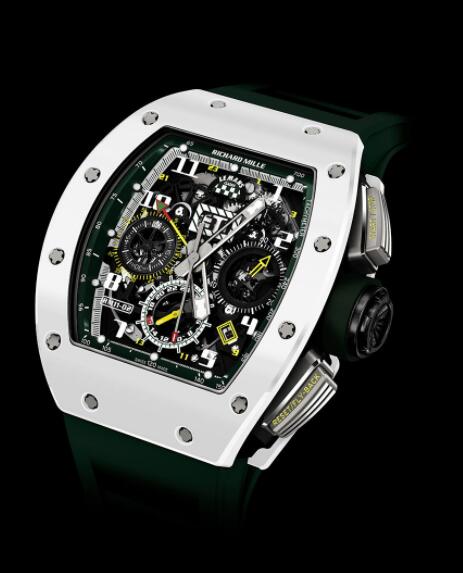RICHARD MILLE presents the RM 35-03 AUTOMATIC RAFAEL NADAL
The new RM 35-03 Automatic Rafael Nadal, the fourth timepiece in the collection, fully deserves its place in this outstanding lineup, bringing with it a patented innovation, the butterfly rotor.
Inspired by the RM 027 series of tourbillon watches worn by Rafael Nadal on the tennis court, the RM 035 'baby Nadal' collection is designed to be the epitome of technology for anyone keen to perform. The new RM 35-03 Automatic Rafael Nadal, the fourth timepiece in the collection, fully deserves its place in this outstanding lineup, bringing with it a patented innovation, the butterfly rotor.
"We all strive for excellence in our respective fields. We speak the same language, Richard and I. We are both passionate about what we do. Keeping the flames of that passion alive for what we do every day is for me Crucially. Even though I didn't wear the RM 035 model in the race, it warmed my heart to feel the confidence he and the team showed to take me on this extraordinary adventure," Rafael Na Dahl shared.
After three full years of development, Richard Mille has grown from its chrysalis this new system for movement winding, which spreads its wings in the RM 35-03. While the RM 35-02's Calibre RMAL1 already had a variable geometry rotor - an iconic component of the Richard Mille automatic movement - the RM 35-03's new butterfly rotor allows the wearer to directly interact with the rotor's geometry, controlling the movement of the winding Speed is based on lifestyle and activity level for fun and practicality.
“Previously, any modification to the rotor geometry needed to be done by one of our authorized watchmakers. We wanted to perfect the system so that the wearer could directly influence the speed at which the watch is wound,” explains Salvador Arbona, Technical Director of Movements . "It's like the driver being able to adjust the transmission from city use to the track by activating the Sport mode."
The butterfly rotor consists of two grade 5 titanium arms with heavy metal counterweight sections mounted on them, activated by a separate gear train via a dedicated button. In their initial position, the counterweights create an outward radial displacement of the center of gravity, translating every movement of the wearer into the torque required to wind the barrel.
However, at the push of a button at 7 o'clock, the rotor's gears will deploy the two weights through a 180° angle. The center of gravity is aligned, the rotor returns to the equilibrium position, and the winding process is suspended, thus preventing the movement from being overwound.
Toggling between modes - from normal mode, which winds the barrel spring, to "sport mode", which suspends rotor activity - the pressure on the button prompts the function to provide haptic feedback, allowing the wearer to actually feel the bounce of the weight section on their Separate on the wrist.
The winding indicator at 6 o'clock on the dial shows whether the rotor is active (on) or not (off). The rounded motion command is a function selector. By pressing the pusher at 2 o'clock, the user can switch between winding (w), neutral (n) and time setting (h) activities.
Elegant and ergonomic in its lines, the RM 35-03 is available in two versions - Blue Quartz TPT® with White Quartz TPT® Strap and White Quartz TPT® and Carbon TPT® with Carbon TPT® Strap - Display cutout inspired by RM 27-04 Tourbillon Rafael Nadal.
The fully skeletonized movement, thanks to the sapphire crystal on the front and back, can be admired from both sides. The baseplate and bridges are made of grade 5 titanium with a grey plasma and PVD treatment, further accentuating the watch’s bold visuals. Sweeping along the outer edge, the skeletonized hands, also in micro-blasted grade 5 titanium, embellish the numerals 3, 6, 9 and 12 and slope towards the movement for added depth.
This elegant look visually highlights the technical prowess of the RM 35-03 Automatic Rafael Nadal. With this new model and its stunning "butterfly rotor", wearers can now truly experience their watch as an extension of the body.


No comments:
Post a Comment